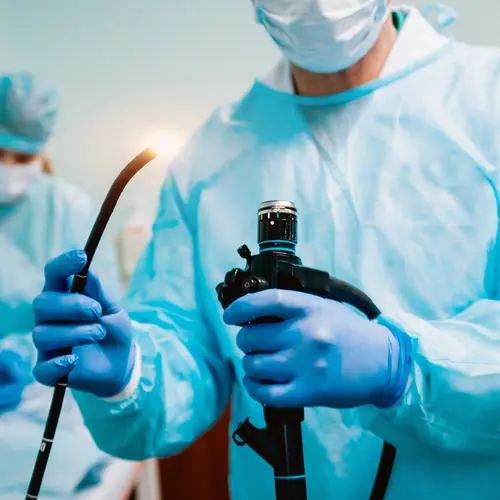The Stretta procedure is a non-invasive, outpatient procedure designed to relieve symptoms of acid reflux (GERD) by reshaping the opening between the stomach and esophagus. The procedure helps restore the barrier in order to prevent acid from entering the esophagus and causing GERD symptoms. It is safe and has a history of very few complications.
The Stretta procedure is done with a Stretta,® a patented device.
In the Stretta procedure, an endoscope —a small camera and light in a flexible tube — is put down your throat, past your esophagus, and into your stomach. Stretta delivers a radiofrequency pulse to the muscle tissue of your lower esophageal sphincter — where the esophagus meets the stomach.
The low-energy pulses help to bolster the esophageal sphincter without harming nearby tissue. This allows the pulse to be therapeutic instead of destructive.
Why Use the Stretta Procedure for GERD Treatment?
The Society of American Gastrointestinal and Endoscopic Surgeons has given Stretta the highest recommendation for treating gastroesophageal reflux disease (GERD). GERD is caused by acid moving up from the stomach into the esophagus. The most common symptoms are heartburn and regurgitation.
The first treatment for GERD is a medication called proton pump inhibitors (PPIs). These can completely get rid of all of the symptoms that you experience from GERD. If this is the case, then you don’t need the Stretta procedure.
However, PPIs are sometimes only able to partially get rid of your symptoms or they don’t work at all. If this is the case, your doctor may recommend the Stretta Procedure.
Stretta has been shown to be highly effective for people with GERD. The results can vary from person to person and you might notice a difference immediately after the procedure. It could also take up to six months for you to notice a change in symptoms, because your esophageal muscle needs time to heal.
Studies show that Stretta treatment can completely eliminate the need for PPIs for at least four years and up to ten.
How Is the Stretta Procedure Done?
The Stretta procedure is the most frequently performed outpatient procedure in the U.S. The entire procedure usually takes between 40 and 60 minutes. The steps are:
- First, medication is given to help prevent pain and calm you. You’ll probably be awake for the procedure.
- Then your doctor will thread an endoscope through your mouth and down your throat. It will pass through your esophageal sphincter and into your upper stomach.
- Your doctor will use the camera to look at the damage to your esophageal sphincter and decide on particular locations to apply treatment.
- The Stretta ® device is used to apply the radiofrequency pulse treatments. You might feel discomfort from the insertion of the endoscope and when the actual pulse is given.
- Your doctor will take one last look with the camera before removing the endoscope.
- You should have recovered enough to resume your normal activities by the next day at the latest.
You might feel discomfort from the insertion of the endoscope and when the actual pulse is given.
The procedure can be repeated if necessary. Most patients show an even better response to two treatments instead of just one. Your doctor may recommend a second round of treatment, depending on the results of the first.
Are There Risks in Getting the Stretta Procedure?
The Stretta procedure is very safe. There rate of complications is 1 in every 15,000 procedures.
The most common complication from the Stretta procedure is chest or throat pain from the procedure itself. You may want to take a liquid painkiller immediately after the procedure since your throat will be sensitive to hard pills. You may also need to take medication for up to eight weeks after the procedure to help your throat heal. Your doctor will prescribe this if you need it.
Additional complications that could arise from the surgery include:
- Bleeding at the surgery site
- Difficulty burping
- Accidental tearing of the lining of the esophagus
There is currently no evidence that Stretta causes an increased rate of cancer.
How Does Stretta Work?
There are two possible reasons why the Stretta procedure is such an effective treatment. First, the pulse seems to cause the muscle of the lower esophageal sphincter to thicken. This creates a barrier to stomach acid and prevents it from reaching the esophagus. There is also some evidence that the procedure makes the tissues less sensitive to stomach acid so you don’t feel as much discomfort from reflux.
Talk to your doctor if you experience recurring symptoms of acid reflux or have been diagnosed with GERD and the usual medications are not helping.
